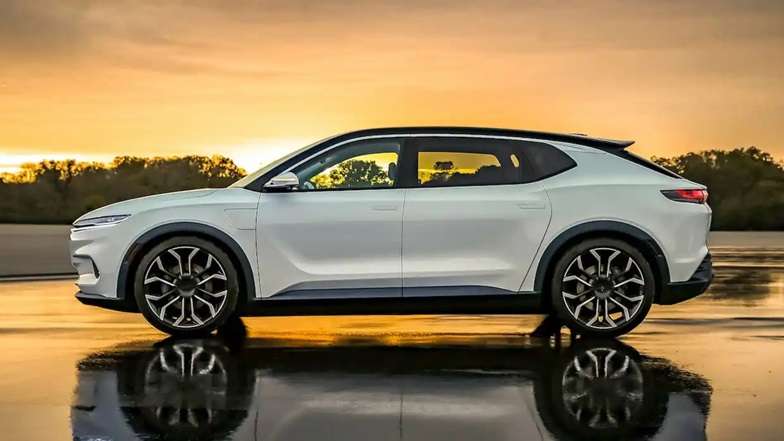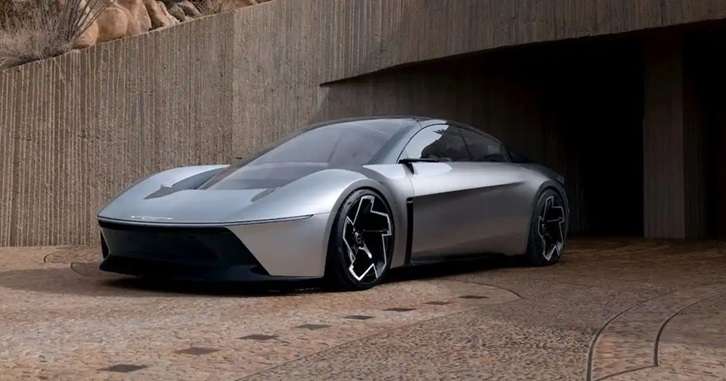Chrysler’s Electric Crossover Delay: What It Means for the Brand’s EV Future
If you’ve been eagerly awaiting Chrysler’s first electric vehicle (EV), there’s disappointing news: the launch of its highly anticipated electric crossover has been delayed yet again. The company, which aims to transition to an all-electric lineup by 2028, is making adjustments to its plans. Here’s what’s happening and what it means for Chrysler’s EV ambitions.

Why the Delay?
Despite its bold electrification goals, Chrysler has yet to introduce a single EV. Originally slated for release later this year, the brand’s first electric crossover has now been postponed. A leaked internal email from Stellantis, Chrysler’s parent company, confirmed the program is “on hold until further notice.”
The crossover was expected to build upon the Airflow concept revealed in 2022. However, in late 2023, Stellantis’ head designer, Ralph Gilles, announced that the project was “evolving in a new direction.” While details remain sparse, Chrysler has hinted at plans to integrate design cues from its radical Halcyon concept into the new EV.
The electric crossover was supposed to be built on Stellantis’ STLA Large platform, which powers other EVs like the Jeep Wagoneer S and Dodge Charger Daytona EVs. This platform was set to offer advanced capabilities, including greater range and performance compared to Chrysler’s previous RU platform, which underpins the Pacifica Hybrid.
Chrysler CEO Chris Feuell stated at a 2023 automotive conference that the first EV would debut as a two-row crossover in 2025. However, with the program now delayed, the launch timeline remains uncertain.
What Does This Mean for Stellantis in the U.S.?
The delay of Chrysler’s electric crossover is just one of several setbacks for Stellantis in the U.S. market. Last year, Stellantis sales fell by 15% in the U.S., marking four consecutive years of decline. Chrysler itself saw a 7% drop, while other Stellantis brands like Jeep, Ram, Dodge, and Alfa Romeo experienced even steeper losses.
Software issues have also plagued the rollout of the first Jeep and Dodge EVs, which were initially expected to hit U.S. dealerships by late 2024. These challenges raise questions about Stellantis’ ability to compete in an increasingly competitive EV market.
Former Stellantis CEO Carlos Tavares has even warned that unprofitable U.S. brands could face closure. “If they don’t make money, we’ll shut them down,” he told reporters. However, Chrysler appears to have dodged that fate for now. CEO Chris Feuell reassured CNBC last year that Chrysler is “here to stay” and is receiving significant investment for its future lineup.

A Shifting Vision for Chrysler’s EVs
The evolution of Chrysler’s electric crossover reflects the company’s changing approach to electrification. The Airflow concept, introduced in 2022, was initially seen as the brand’s stepping stone into the EV market. But with the recent unveiling of the futuristic Halcyon concept, Chrysler seems to be aiming for something more radical and innovative.
While no specific launch date for a production Halcyon-inspired EV has been announced, Chrysler’s commitment to developing this concept indicates a desire to create a standout vehicle in the crowded EV space.
What’s Next for Chrysler?
For Chrysler to thrive in the EV market, it needs to overcome significant hurdles:
- Restoring Consumer Confidence: Frequent delays and evolving designs can erode trust among potential buyers. Clear timelines and consistent updates will be crucial.
- Competitive Offerings: As rivals like Tesla, Ford, and GM continue to expand their EV portfolios, Chrysler must deliver models with competitive range, performance, and pricing.
- Streamlined Operations: Addressing software issues and production challenges will be essential to avoid further setbacks.
Despite these challenges, there’s hope. Chrysler’s shift toward integrating innovative design and advanced technology suggests it’s aiming for more than just compliance with industry trends. If the brand can successfully execute its vision, it has the potential to carve out a unique space in the EV market.
Chrysler’s journey toward electrification is far from smooth, but it’s not over. The delay of its electric crossover may be frustrating for enthusiasts, but it could also provide the company with the opportunity to refine its offerings and ensure its first EV is worth the wait.
With its ambitious goals and investment in futuristic concepts like the Halcyon, Chrysler has a chance to redefine its identity in the EV era. Whether it succeeds will depend on how well it navigates its current challenges and delivers on its promises.
For now, patience is key as we wait to see if Chrysler can turn its electrified dreams into reality.
Related Post
